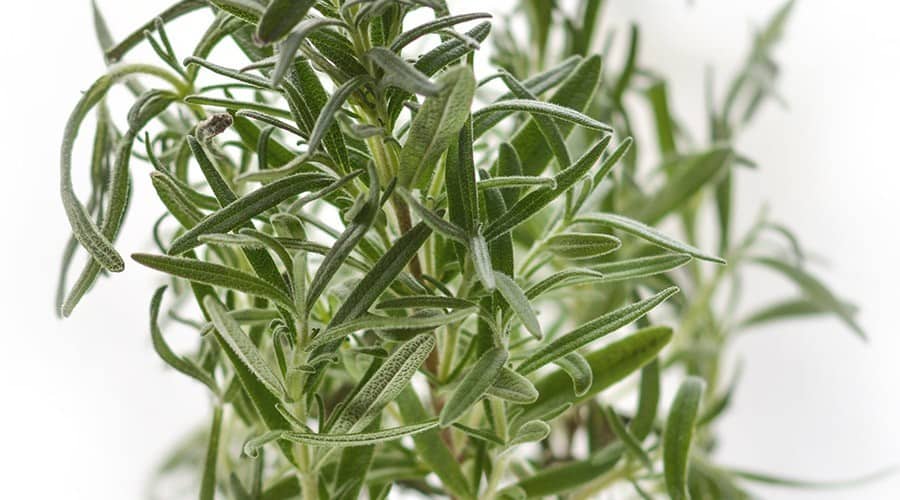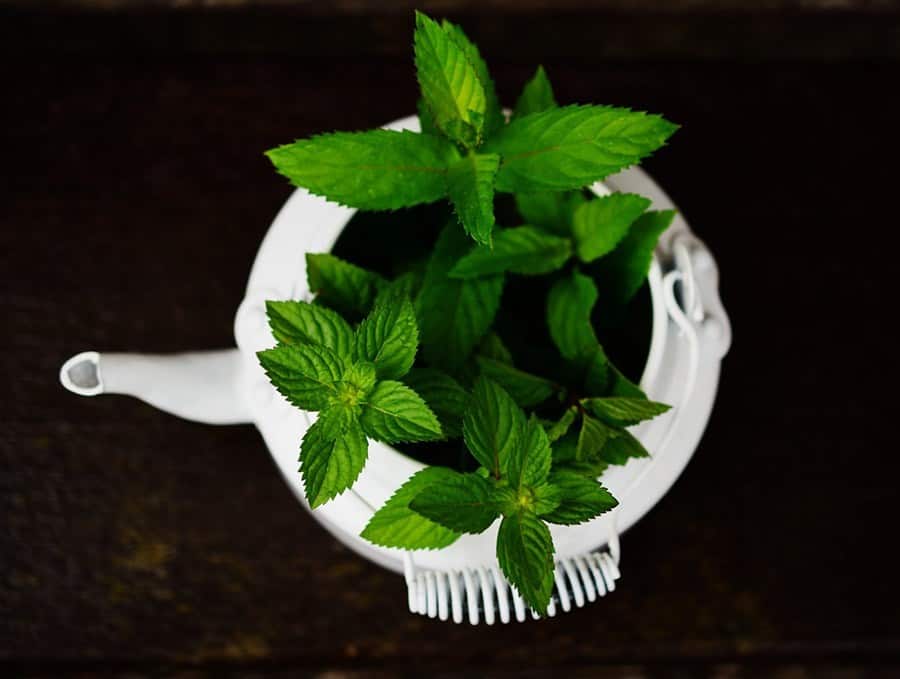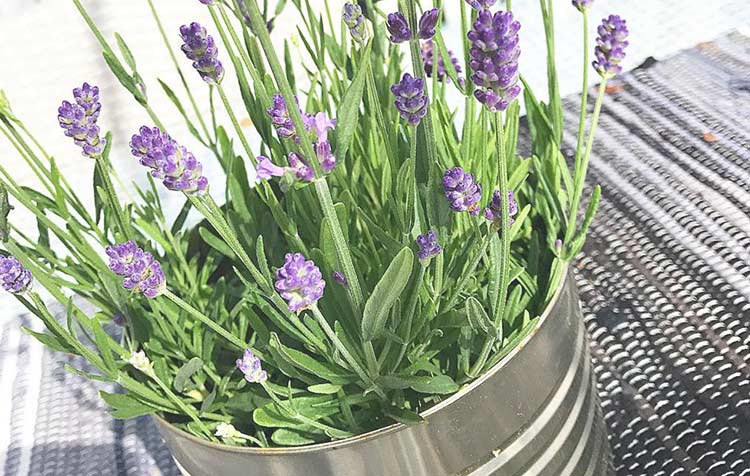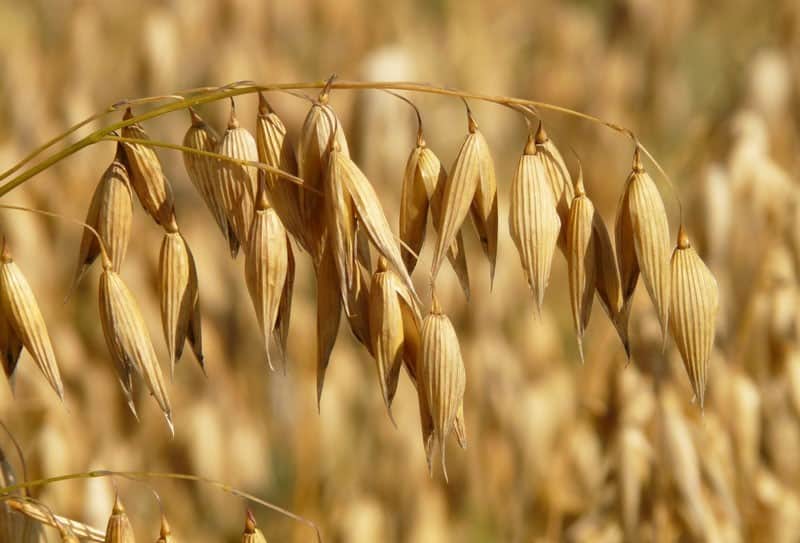Living naturally means healthy plants & herbs To have around you. Today I'm giving you a list of the top 10 plants & herbs that you should definitely plant at home and that have an incredibly positive effect on your health. Healthy plants that massively reduce the likelihood of disease. Because the mentioned plants have a positive effect on your mood as well as on your whole organism. Today you will learn what effect rosemary, lavender, etc. have on your body, how you can use the plants yourself and how you can get the natural active ingredients cheaply. Have fun!
For better orientation here is a small Table of contents about the article:
- Rosemary
- Echinacea (Echinacea)
- Chamomile
- Sunflower
- Peppermint
- Lavender
- Prickly pear
- Oats
- Mullein
- Lemon balm
1. rosemary

Rosemary is a healthy plant with a high content of essential oils, flavonoids, rosmarinic acid and bitter substances. The rosemary oil and rosemary leaves are ideal for use as a culinary herb or as a medicinal herb because of the natural ingredients. So planting rosemary yourself or at least having it in your home really makes sense!
Effect of rosemary: Rosemary pushes your concentration and brain power to unknown heights. The healthy herb is therefore even used against dementia and Alzheimer's disease. Rosemary essential oil is perfect in the application for healthy and beautiful hair and helps with itchy scalp and dandruff. Rosemary oil also has a regenerative effect on joint and muscle problems. So, both in the bath or as a massage oil, the healthy plant is also a real wonder weapon! Rosemary oil promotes blood circulation in your skin and is therefore also a popular means to look young for a long time. Rosemary is also the ideal herb to strengthen your immune system.
Planting rosemary yourself: If you want to grow healthy plants like rosemary yourself, you need to take into account a few things. The medicinal herb must necessarily be planted in dry and and at least 20 ° C warm places. As a growing medium for rosemary should rather use pumice instead of potting soil, because pumice can store water and release it to plants when needed. Too little water tends to be better for rosemary than too much water, by the way! Rosemary is one of many healthy plants and herbs that require very little fertilizer, and if they do, ordinary compost will suffice. So you can plant rosemary itself, you should create a pre-culture (reuse of an old plastic tray or other imitation of a greenhouse 😉 ) on the windowsill, where there is always at least 20 ° C basic heat. So the healthy plant can germinate ideally.
Buy rosemary: Rosemary you can use for example get here as an essential oil. In this form, the healthy plant is perfect as a bath additive, for massages and of course as an additive in cooking. But of course you can also get rosemary in dry cut form. Here are cut rosemary in the plastic-free packaging. Of course, you can also get planted rosemary in supermarkets & hardware stores. But if you want to have the whole plant at home, you should rather plant rosemary yourself and do without the plastic tray that you usually get with it.
2. echinacea (coneflower)
Echinacea is also called coneflower or hedgehog head. The healthy plant actually comes from North America, but also grows in our country. Echinacea has become known mainly as a medicinal plant. Since the effective plant has a positive effect for your immune system and your Strengthens defensesEchinacea is an important component of many homeopathic medicines.
Effect of Echinacea: Echinacea is a plant that contains many alkamides (possess numerous anti-inflammatory properties) and essential oils. Depending on the exact type of plant, ingredients and effects differ slightly. But one thing is for sure: the plant strengthens your immune system and helps you to get sick less often. Ideally, you should start taking echinacea at the first sign of a cold. Then you have a good chance that the plant will keep you healthy. The anti-inflammatory echinacea has been shown to speed up wound healing in numerous trials. The healthy plant inhibits the activity of certain enzymes, producing fewer messenger substances and reducing fatigue, pain & inflammation. For example, sunburns can regenerate faster.
Plant Echinacea yourself: Healthy plants like Echinacea need relatively humid conditions and a temperature of about 20°C if you want to plant them yourself. For planting I have read the following tips, since I have not yet tried it myself: Let the seeds of the plant pre-swell in water and then sow them in a tray about 2 cm apart - in the period from March to July! As soon as the plant has formed the first healthy, complete leaves, you can transplant it into a normal flower pot. From April to August you should then move the plant outside and plant it.
Buy Echinacea: Echinacea is often available as here in drop form or also as capsules, but they are usually packed in plastic. The healthy plant you can also get here in cut form. Really good tastes but also this echinacea tea.
3. chamomile
The Chamomile is a time-honored home remedy that is proven to be very healthy for our body. The cool thing is that you can easily grow it at home!
Effect of chamomile: With a high content of essential oils and flavonoids, the healthy plant has anti-inflammatory, antibacterial and also antispasmodic effects. The plant has been used for a long time to treat stomach aches and sore throats naturally. Chamomile can be inhaled, classic chamomile tea can be made from the flowers or the chamomile oil can be used as a massage additive, bath additive or even against headaches and sore throats. Even the scent of the plant helps with headaches and also with sleep problems.
Planting chamomile yourself: Chamomile is one of many healthy plants that have a few things to consider if you want to plant it yourself. As a basis to plant the chamomile itself, a sandy loam soil is ideal and the location should be sunny but protected. The optimal time for planting in Germany is mid / late August and you should leave about 0.5 cm space between the seeds. You do not need to press the chamomile seeds deep into the soil, they also do not need too much water. They usually start to germinate after only one week. In winter you should cover the plants and cut them back a little after winter.
Buy chamomile: If you would rather have the effect of chamomile directly, you can use order chamomile flowers plastic free here and use the healthy plant as a bath additive or for a classic chamomile tea. For example, as a massage additive for joint pain you should use this chamomile oil add.
4. sunflower
Everyone knows the Sunflowerbut few know the value of the plant for our health. Because the seeds of the sunflower contain pretty much all the nutrients that our body needs. But the really cool thing is that you can eat the seeds just like that as a little snack. Healthy plant with good taste!
Effect of the sunflower: Since the seeds of the sunflower contain a high proportion of unsaturated fatty acids, magnesium, iron, calcium, copper, phosphorus, selenium and many other vitamins and nutrients, they are particularly important for healthy skin, hair and nails. Especially the sunflower oil is very healthy for our organism. The effect of sunflower is mainly used for intestinal irritations, colds, inflammation of the skin (gums or wounds in general) or to lower cholesterol. You can enjoy it in tea form, as a massage oil, or as a simple snack between meals. With the sunflower oil you can also do the so-called oil pulling and clean your mouth fundamentally.
Planting sunflowers yourself: You can also easily plant the sunflowers yourself. The healthy plant needs a lot of sun, a warm environment and a humus and nutrient-rich soil. Press the seeds about two centimeters into the soil and leave about 3 cm space between each seed. If you sow the sunflower seeds starting in mid-May, you will already have your sunflowers by summer. However, I advise you to preplant the seeds in a bright place indoors as early as March. Outside it is still too cold for the sunflower until mid-May. But as soon as it gets warmer, the healthy plant needs a little more water. With special fertilizer for green plants you should give the sunflowers a little boost.
Buy sunflowers: Although sunflowers are wonderful to grow yourself, you can of course get the healthy active ingredients of the plant in other forms to promote your health. Here you can order plastic free sunflower seeds. You should buy the oil in the market in the glass bottle. It costs 1-3€ and for that the online shipping way is not necessary. You can get the flowers of the sunflower here and you can use it wonderfully to make yourself a tea or a pleasant bath additive from the healthy plant.
5. peppermint

There are an incredible number of different types of mint. One of them is the Peppermint, whose refreshing menthol flavor should actually be known to everyone. Peppermint is a healthy plant that should not be missing in any home.
Effect of peppermint: This healthy plant also contains essential oils, such as the refreshing menthol. In addition, the peppermint also contains flavonoids and important tannins. I find it particularly pleasant on the skin because it gives a direct cooling effect. Also after inhalation it pulls cool through the throat. Peppermint has an expectorant, antibacterial effect and stimulates your concentration. Also as a mouthwash or as bath salts (available here in a gift set) the peppermint achieves its full effect.
Plant peppermint yourself: If you want to plant the peppermint yourself, just get the appropriate seeds or buy directly young peppermint in the hardware store. To grow well, the healthy plant requires a loose, humus-rich soil with lime and Compost as a fertilizer. Unlike sunflower, peppermint loves shade. So grow the plant directly in the sun does not make sense. Planting peppermint outside is also recommended only from mid-May. Take the Ice Saints as the cut-off date. Water regularly and you will have the next healthy plant at home!
Buy peppermint: You should buy young plants in the hardware store. The healthy Peppermint oil you get here. You can use the leaves of the plant as a healthy bath additive or to prepare a peppermint tea order plastic free here.








Thanks for the tips. Have long been looking for what I can plant in my balcony. For real vegetables is too small and since I would probably rather order what from the yard, but so small things you can do super yourself and also enjoy it. From therefore thank you!
Right on! Thanks for your feedback and have fun planting 😉
Many greetings
Christoph
Hello Christoph,
do you have a tip for a plastic-free planter box for the balcony?
Many thanks and greetings
Hi!
A clay flower box from the hardware store? 🙂
Many greetings,
Christoph
Comments are closed.